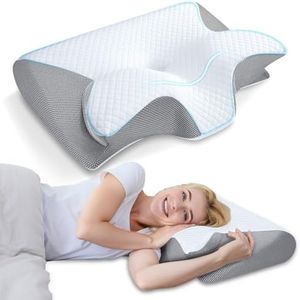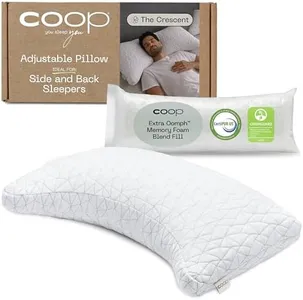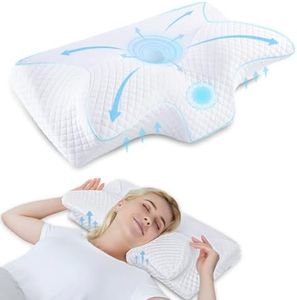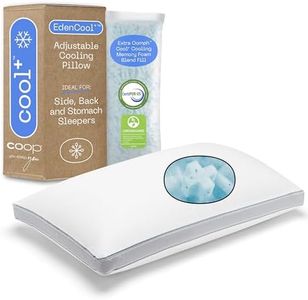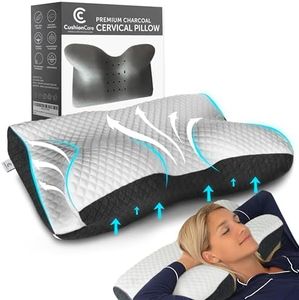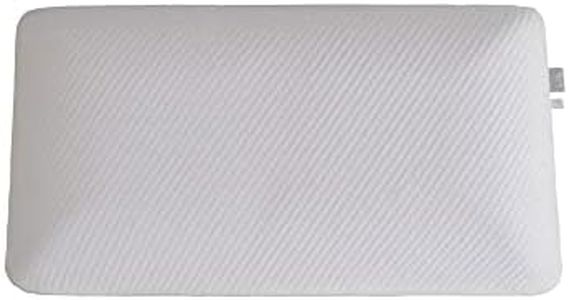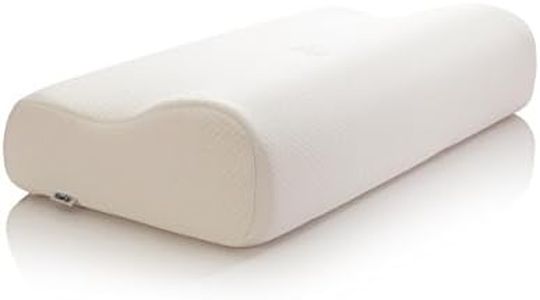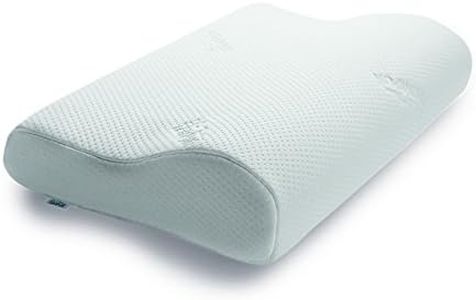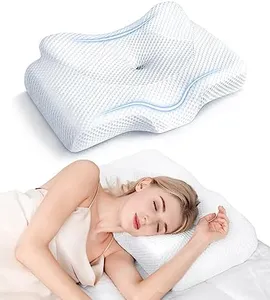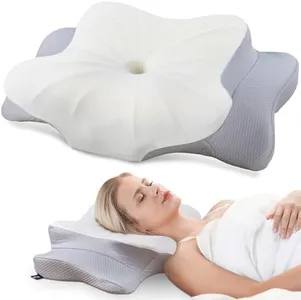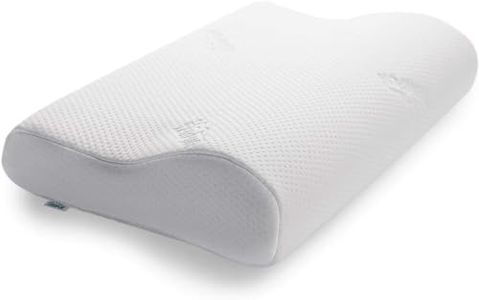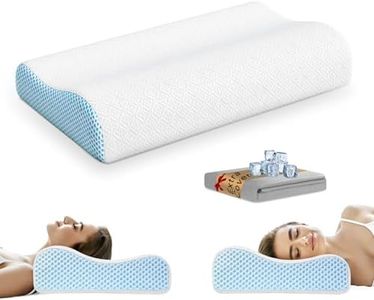We Use CookiesWe use cookies to enhance the security, performance,
functionality and for analytical and promotional activities. By continuing to browse this site you
are agreeing to our privacy policy
10 Best Pillow For Neck Pain Side Sleepers
From leading brands and best sellers available on the web.Buying Guide for the Best Pillow For Neck Pain Side Sleepers
Choosing the right pillow for neck pain when you’re a side sleeper can make a big difference in your comfort and sleep quality. The goal is to keep your neck and spine aligned while you sleep, so you don’t wake up with stiffness or discomfort. When shopping for a pillow, pay attention to how supportive it is, the shape, its height (also called loft), the filling material, and the firmness level. These factors all play a role in how well the pillow supports your neck and shoulders as you sleep on your side. Always consider your body shape, personal comfort preferences, and any recommendations from your healthcare provider.Pillow LoftPillow loft refers to the height or thickness of the pillow when it’s lying flat. It’s important because the right loft keeps your neck in alignment with your spine, preventing extra strain. Side sleepers usually do best with medium to high loft pillows that fill the space between the mattress and the side of your head. Low loft pillows often flatten too much and leave your neck unsupported. Medium loft (about 3-5 inches) is great for most people, while high loft pillows (over 5 inches) are suitable for those with broader shoulders or who prefer a more elevated head position. Choose a loft based on your shoulder width and how deeply you sink into your mattress—if you have broad shoulders or a firmer mattress, a higher loft might suit you better.
Support and ContourSupport refers to how well the pillow holds your head and keeps your neck in a straight line with the rest of your spine. Strong support is essential for side sleepers with neck pain. Some pillows are contoured or have a special ergonomic shape to cradle the neck and help maintain natural alignment; these can be particularly helpful for managing pain. If you notice that regular pillows let your head tilt up or down, consider a contoured pillow. However, the right design depends on what feels comfortable and natural to you, and sometimes simple shapes work if the pillow is otherwise supportive.
Firmness LevelFirmness describes how much the pillow keeps its shape under your weight. Side sleepers typically need a pillow that’s medium-firm to firm because it won’t collapse under your head and neck, giving consistent support throughout the night. Soft pillows can allow your head to sink too much, causing alignment problems that can worsen neck pain. When choosing firmness, think about your comfort—if you like a cushier feel but want to avoid neck pain, look for pillows that are soft on the surface but have a firm core for support.
Filling MaterialFilling material affects the feeling, support, durability, and even temperature of your pillow. Common options include memory foam, latex, feather, down alternative, and shredded foam. Memory foam and latex usually offer good support and are popular for those with neck pain because they conform closely to your shape but don’t flatten easily. Down and feather pillows tend to be softer and less supportive, though down alternative versions can work if built with enough loft and firmness. Shredded foam pillows are adjustable, so you can add or remove filling to match your needs. Choose a material that matches your preference for feel, any allergies you have, and how cool or warm you like to sleep.
Size and AdjustabilityPillow size (like standard, queen, king) doesn’t affect neck pain directly, but a larger pillow can give you more room to move and support your head as you shift in sleep. Adjustable pillows let you add or remove filling to control the loft and firmness yourself, which is great if you’re unsure what you need or if your preferences change over time. Look for features like zippers on the cover or bags of extra filling for this purpose. If you try a pillow that’s not adjustable, always check the return or trial policy just in case you need to make a change.
